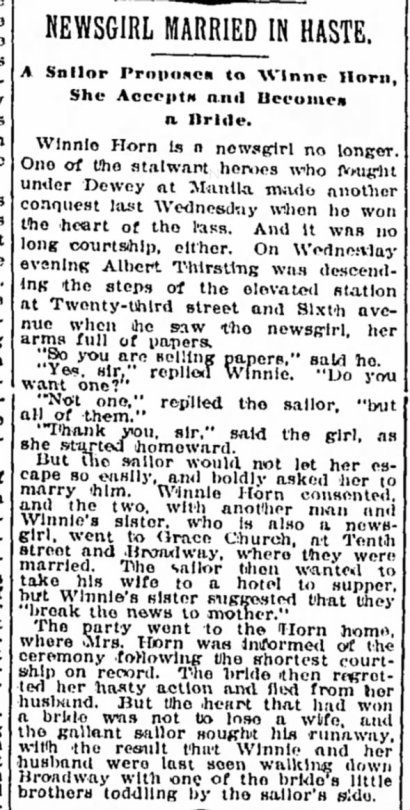More boys than girls sold papers at the turn of the century. There are a few reasons for this.
First, people thought the streets were dangerous. Both physically and morally. There were men who wanted to take advantage of a young child. And constant exposure to sexual images on theatres and advertisements, as well as seeing prostitutes in the street could corrupt a child’s innocence. If boys were corrupted that was bad of course. But they weren’t about to get pregnant. A girl might. And that would cause dishonour to the whole family. So they had to be kept off the streets. Because of this, many families allowed their boys to get street jobs, but not their girls. Furthermore, states with child labour laws often put the accepted age higher for girls than for boys, meaning the job was open to more boys than girls.
Second, girls were needed in the house. In the day before automation, chores were a much bigger deal. Clothes were washed by hand. Dishes needed to be scrubbed. Cooking involved lighting fires and keeping the chimney clean. This meant mothers didn’t have time to do all their chores and also take care of the many children most families had, plus any lodgers staying with them. Girls were expected to help with the chores, take care of their younger siblings, and often do the family’s shopping, leaving their mothers free to do the more complicated or difficult chores herself.
Third, even the girls who did get jobs didn’t get jobs as newsies. The job involved a lot of running around, pushing wares in people’s faces, and yelling loudly. This was fine for boys to do, but for girls it was improper. Instead, some girls would get jobs in factories or shops, where a manager could keep an eye on them and make sure they were staying proper and ladylike. Still more girls would help their mothers with paid work at home, caring for lodgers, doing neighbours’ laundry, making lace, collecting and selling rags, and so on.
For all these reasons, while there certainly were girls selling papers, there were fewer of them than there were boys.
Source: Children of the City: At Work and At Play by David Nasaw












